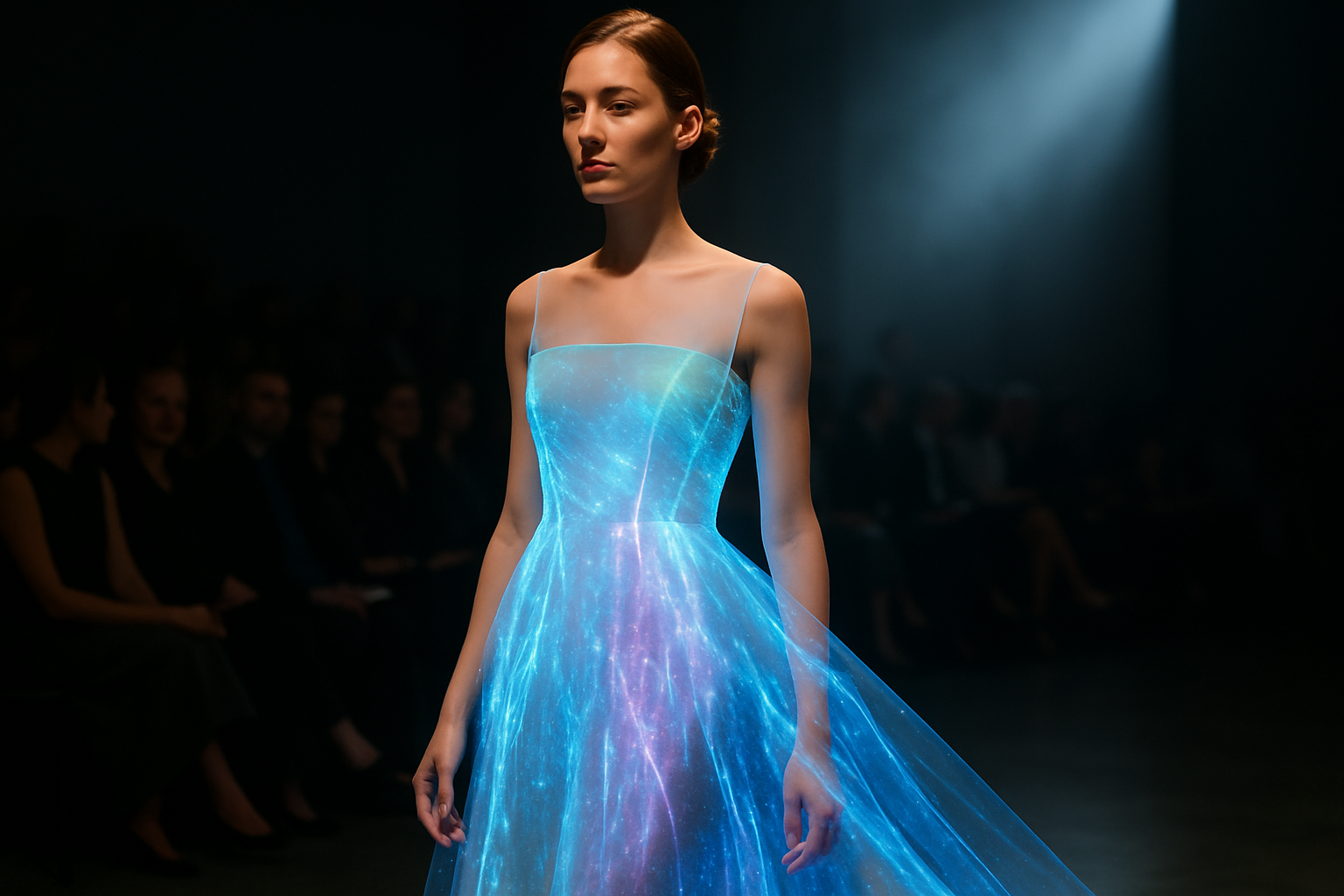Holographic Haute Couture: Fashion's Digital Frontier
In an era where technology permeates every facet of our lives, the fashion industry stands on the cusp of a revolutionary transformation. Holographic haute couture, a cutting-edge fusion of high fashion and advanced digital technology, is redefining the boundaries of clothing design and runway presentations. This article delves into the emerging world of holographic fashion, exploring its potential to reshape the industry, challenge traditional notions of materiality, and usher in a new age of sartorial expression.

As holographic technology evolved, its potential applications in various fields became apparent. The entertainment industry was quick to adopt holograms for concerts and events, famously resurrecting deceased performers for virtual performances. This crossover between technology and performance art caught the attention of forward-thinking fashion designers, who began to envision a world where clothing could transcend physical limitations.
Technological Breakthroughs
The realization of holographic fashion required significant technological advancements. The development of sophisticated projection systems, capable of creating high-resolution, three-dimensional images in real-time, was crucial. Additionally, innovations in lightweight, flexible display technologies and advancements in augmented reality (AR) have played pivotal roles in bringing holographic garments to life.
Recent breakthroughs in nano-scale light-emitting diodes (LEDs) and photonic crystals have enabled the creation of fabrics that can emit and manipulate light at unprecedented levels of precision. These technologies allow designers to craft garments that can change color, pattern, and even shape in real-time, responding to environmental stimuli or wearer preferences.
Pioneers of Digital Drapery
Several visionary designers and tech-savvy fashion houses have been at the forefront of holographic fashion. Iris van Herpen, known for her avant-garde creations, has incorporated holographic elements into her couture pieces, blurring the line between physical and digital realms. Her collaborations with architects and technologists have resulted in garments that seem to defy the laws of physics, shimmering and morphing as models glide down the runway.
Similarly, the London-based design collective The Unseen has gained recognition for their color-changing fabrics that react to temperature and air quality. Their work represents a bridge between traditional textile craftsmanship and cutting-edge technology, pointing towards a future where our clothes are not just passive adornments but active, responsive extensions of ourselves.
The Runway Revolution
Holographic fashion is not limited to the garments themselves; it is also transforming the very nature of fashion shows and presentations. Traditional runways are being reimagined as immersive, multidimensional spaces where physical and digital realities converge. Designers are experimenting with holographic models, allowing them to showcase their collections simultaneously in multiple locations around the globe.
This digital transformation of fashion shows has far-reaching implications for the industry. It democratizes access to high fashion events, allowing a global audience to experience the spectacle of a couture show in real-time. Moreover, it opens up new possibilities for storytelling and brand engagement, enabling designers to create fantastical environments that perfectly complement their collections.
Sustainability and Ethics in the Digital Age
As the fashion industry grapples with issues of sustainability and ethical production, holographic fashion presents both challenges and opportunities. On one hand, the ability to create virtual garments could significantly reduce the environmental impact of fashion production and consumption. Digital clothing requires no physical materials, generates no waste, and can be infinitely customized without additional resources.
However, the energy consumption associated with advanced holographic technologies raises new environmental concerns. As the industry moves towards more digital solutions, it must also consider the carbon footprint of data centers and the rare earth minerals required for electronic components.
Ethically, holographic fashion prompts us to reconsider our relationship with clothing and self-expression. As the line between physical and digital wardrobes blurs, questions arise about ownership, identity, and the value we place on material possessions. The concept of a purely digital wardrobe challenges traditional notions of luxury and exclusivity, potentially democratizing high fashion in unprecedented ways.
The Future of Fabric and Form
Looking ahead, the potential applications of holographic fashion extend far beyond the realm of haute couture. Imagine clothing that adapts to weather conditions, changing its insulation properties or becoming waterproof at a moment’s notice. Or consider the possibilities for personal expression, with garments that can display real-time social media feeds or artwork.
In the medical field, holographic textiles could revolutionize patient care, with clothing that monitors vital signs and administers medication. For performers and athletes, responsive holographic garments could enhance movement and provide real-time feedback on form and technique.
As holographic fashion continues to evolve, it challenges us to rethink the very nature of clothing. In a world where the digital and physical increasingly converge, our garments may become dynamic interfaces between our bodies and the environment, blending function, art, and technology in ways we are only beginning to imagine.
The dawn of holographic haute couture marks a pivotal moment in fashion history. As designers, technologists, and consumers alike embrace this new frontier, we stand on the threshold of a sartorial revolution that promises to redefine not just what we wear, but how we interact with the world around us. The future of fashion is here, and it’s shimmering with holographic potential.





